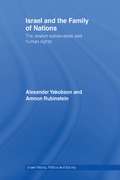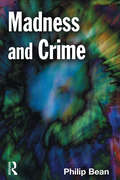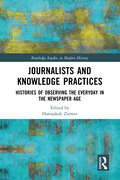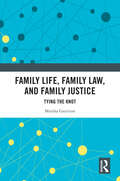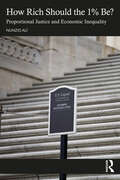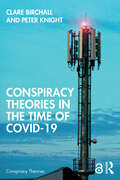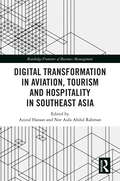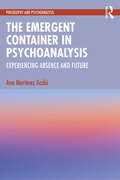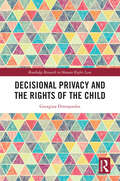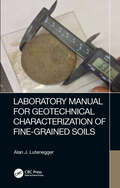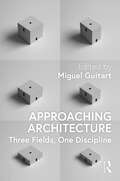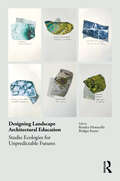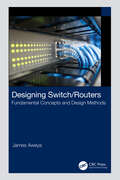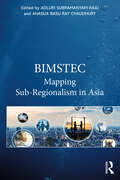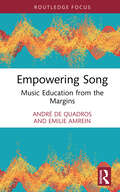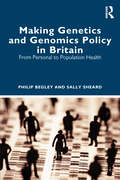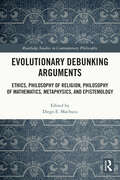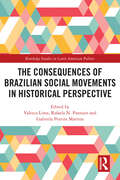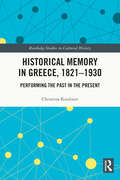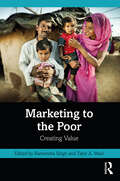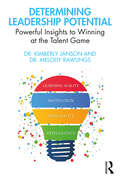Special Collections
Benetech’s Global Certified Accessible Titles
Description: Benetech’s GCA program is the first independent third-party EPUB certification to verify ebook accessibility. By creating content that is born accessible, publishers can meet the needs of all readers. Learn more: https://bornaccessible.benetech.org/
- Table View
- List View
The Violent Workplace
by Ray Bull and P.A.J Waddington and Doug BadgerThe threat of violence concerns most people most profoundly. It has long been a topic of intensive academic, practical and political debate. In recent years the workplace has emerged as a recognized site of violence, threat and menace and this book will make a significant contribution to the growing literature on workplace violence. Using innovative research methods, this book uniquely examines four of the most violence-prone occupations: the police; Accident and Emergency staff; social workers; mental health professionals. The Violent Workplace identifies similarities and differences between these occupations that are far from intuitive. It examines the diversity of experiences that shelter under the concept of 'violence and threats'; promotes the importance of the 'moral dimension' in experiences of violence; analyzes the impact of appearance and reputation in creating fear; discusses the importance of context in creating a sense of menace; and concludes by considering the practical implications of this research for handling violence and managing those who have suffered it.
Israel and the Family of Nations
by Alexander Yakobson and Amnon RubinsteinCan Israel be both Jewish and truly democratic? How can a nation–state, which incorporates a large national minority with a distinct identity of its own be a state of all its citizens? Written by two eminent Israeli scholars, a professor of constitutional law and a historian, Alexander Yakobson and Amnon Rubinstein are the first to treat Zionism and Israeli experience in light of other states’ experiences and in particular of newly established states that have undergone constitutional changes and wrestled with issues of minorities. Citing various European, constitutions and laws, the authors explore concept of a Jewish State and its various meanings in the light of international law, and the current norms of Human Rights as applied to other democratic societies compatible with liberal democratic norms and conclude that international reality does not accord with the concept which regards a modern, liberal democracy as a culturally "neutral" and a nationally colourless entity. In light of the new political map in Israel and the prospect of future disengagement from the West Bank, Israel and the Family of Nations is essential reading for all those who wish to understand Israel’s future challenges.
Madness and Crime
by Philip BeanThis book provides an authoritative and highly readable review of the relationship between madness and crime by one of the leading authorities in the field. The book is divided into four parts, each essay focusing on selected features of madness which have relevance to contemporary society. Part 1 is about madness itself, exploring three main models − cognitive, statistical, and emotional. Part 2 is a short discussion on madness, genius and creativity. Part 3 is about the much neglected area of compulsion, an issue that has largely disappeared from public debate. The mad may have moved from victim to violator, yet fundamental questions remain − in particular how to justify compulsory detention, and who should undertake the process? The answers to these questions have sociological, ethical and jurisprudential elements, and cannot just re resolved by reference to medical authorities. Part 4 is about the links between madness and crime − focusing less on the question and nature of criminal responsibility and the various defences that go with this, more on the links between madness and crime and which particular crimes are linked with which types of disorder.
Journalists and Knowledge Practices
by Hansjakob ZiemerThis multi-disciplinary anthology provides new perspectives on the journalist’s role in knowledge generation in the newspaper age—covering diverse topics from fake news to new technologies. Fake news, journalistic authority, and the introduction of cutting-edge technologies are often viewed as new topics in journalism. However, these issues were prevalent long before the twenty-first century. Connecting for the first time two burgeoning strands of research—a newly perceived history of knowledge and the study of journalism—Journalists and Knowledge Practices provides insights into the journalist’s role in the world of knowledge in the newspaper age (ca. 1860s to 1970s). This multi-disciplinary anthology asks how journalists conducted their work and reconstructs histories of journalistic practices in specific regional constellations in Europe and North America. From fake news writing to inventing psychological concepts, integrating electric telegrams to fabricating photographs, explaining pandemics to creating communities, these case studies written by distinguished scholars from various disciplines in the humanities show how notions of fact and truth were shaped, new technologies integrated, and knowledge transfers arranged. This book is crucial reading for scholars and students interested in the historically changing relationships between journalistic practices and the generation and dissemination of knowledge. This volume is crucial reading for scholars and students interested in the history of journalistic practice.
Family Life, Family Law, and Family Justice
by Marsha GarrisonFamily Life, Family Law, and Family Justice: Tying the Knot combines history, social science, and legal analysis to chart the evolution and interdependence of family life and family law, portray current trends in family life, explain the pressing policy challenges these trends have produced, and analyze the changes in family law that are essential to meeting these challenges. The challenges are large and pressing. Across the industrialized West, nonmarital birth, relational stress, multi-partner fertility, and relationship dissolution have increased, producing a dramatic rise in single parenthood, poverty, and childhood risk. This concentration of familial and economic risk accelerates socioeconomic inequality and retards intergenerational mobility. Although the divide is most pronounced in the United States, the same patterns now affect families throughout the Western world. Across the European Union, there are 9.2 million "lone" parents, and just under half of their families live in poverty. Tying the Knot demonstrates how today’s family patterns are deeply rooted in long-standing, class-based differences in family life and explains why these class-based differences have accelerated. It explains how the values that guide family law development inevitably reflect the world in which families live and develops a new family law capable of meeting the needs of twenty-first century families. The book will be of considerable interest to family specialists from a number of fields, including law, demography, economics, history, political science, public health, social policy, and sociology.
How Rich Should the 1% Be?
by Nunzio AlìHow rich should the 1% be? And, most importantly, when does the distance in economic resources between the richest citizens and ‘us’, the average citizenry, become a concern for justice? This volume explores how excessive economic inequality gives the best-off considerably more political influence than average citizens, thereby violating political equality. It argues that the gap between the best-off and the worst-off should not be reduced because it is good, but rather as an inescapable instrument to protect citizens from the risk of material domination. For this reason, it defends the ‘principle of proportionality’: economic inequality should not exceed a certain range or proportion to enable both the best-off and the worst-off to be co-authors of the legal, political, and socioeconomic rules that govern the ‘social’ relations in which they are involved. Further, the book discusses material domination and explains how money influences politics and what are the remedies for this phenomenon; how social justice should face and harmonise power, poverty, efficiency, individual merit, and economic liberties; and, most importantly, how to determine income and wealth limit ratios in a liberal democracy. A thoughtful investigation on the interdependencies of money and justice and their influence our socio-political systems, this volume will be of great interest to students and researchers of political theory, political philosophy, economics and development, economics theory and philosophy, and social policy.
Conspiracy Theories in the Time of Covid-19
by Peter Knight and Clare BirchallConspiracy Theories in the Time of Covid-19 provides a wide-ranging analysis of the emergence and development of conspiracy theories during the Covid-19 pandemic, with a focus on the US and the UK. The book combines digital methods analysis of large datasets assembled from social media with politically and culturally contextualised close readings informed by cultural studies. In contrast to other studies which often have an alarmist take on the "infodemic," it places Covid-19 conspiracy theories in a longer historical perspective. It also argues against the tendency to view conspiracy theories as merely evidence of a fringe or pathological way of thinking. Instead, the starting assumption is that conspiracy theories, including Covid-19 conspiracy theories, often reflect genuine and legitimate concerns, even if their factual claims are wide of the mark. The authors examine the nature and origins of the conspiracy theories that have emerged; the identity and rationale of those drawn to Covid-19 conspiracism; how these conspiracy theories fit within the wider political, economic and technological landscape of the online information environment; and proposed interventions from social media platforms and regulatory agencies. This book will appeal to anyone interested in conspiracy theories, misinformation, culture wars, social media, and contemporary society.
European Civil Society and International Development Aid
by Balázs Szent-IványiThis book explains how and why European non-governmental development organisations (NGDOs) engage in advocacy towards the European Union (EU). It analyses the heterogenous structure of the sector, with examples ranging from large multinational networks to essentially single person NGDOs. The book provides a detailed map of the topics which have featured in NGDO advocacy since 2006, arguing that NGDOs have generally been reactive in their advocacy towards the EU. The author explains how they have contested a number of policy issues on the agendas of the EU institutions, especially around the diversion of aid to manage migration and leverage private sector investments. Furthermore, some NGDOs have used the COVID-19 pandemic as an opportunity to re-package their pre-existing policy demands. Based on an analytical framework focused around three variables, namely moral vision, funding concerns, and the need to build/maintain a ‘good’ reputation, the book explains these advocacy choices, and argues that much of NGDO advocacy seems to be consistent with funding motivations. The author highlights the importance of moral vision and reputational concerns in moderating how far NGDOs will go with funding-driven advocacy, arguing that motivations need to be looked at in their complexity, and within the specific policy context. Drawing on a range of quantitative and qualitative data sets to provide a rich and varied picture of the advocacy work of European development NGOs, European Civil Society and International Development Aid is a key reference for researchers and practitioners working in the field.
Digital Transformation in Aviation, Tourism and Hospitality in Southeast Asia
by Azizul Hassan and Nor Aida Abdul RahmanTechnological advances and the drive to digitalize business processes in aviation, tourism, and hospitality have forced the industries to go along with the digital movement. The results are often mixed. This book brings together contributions from leading scholars in the field and explores the digital transformation in these industries in Southeast Asia. The book looks at the impact of digital transformation on the region and the issues and challenges brought about by this transformation. It also addresses trends in the industries from blockchain technology, AI, biometric and mobile technology applications to in-flight catering. It examines the impact of COVID-19 on the industries and how the pandemic has led to businesses adopting new business models. Through the case studies of digital adoptions in the region, readers will gain insights on how the countries have leveraged new technologies and the implementation processes to drive digital transformation. The book aims to help scholars and policy makers understand the digital advances in the industries to better formulate responses in research and policy making and deliver effective digital transformation.
The Emergent Container in Psychoanalysis
by Ana Martinez AcobiDrawing largely from the psychoanalytic ground of Jung, Bion and Winnicott, from Plato and Whitehead and from numerous clinical studies, this book explores ‘Absence’ and ‘Future’ in the context of their many emotional and conceptual meanings. Bringing together absence and future with Plato’s concept of the ‘receptacle’ as described in the Timaeus and with Whitehead’s handling of it, the author examines containment in psychoanalytic process. Here Jung’s concept of ‘container’ (Tavistock Lectures, 1935) is in an ancient and continuing tradition of process thinking. The term ‘emergent container’ has been coined as the metaphorical and metaphysical space where the interplay between potentiality and actuality meet in the process of emergent reality. As absence emerges, experience consciousness develops, as well as the potential for symbolic thinking. In this sense, the experience of absence is considered as a potential container for and of creativity. If absence does not emerge as experience, there often follows the compulsion to fill emptiness with hallucination. Absence as it plays into the experience of containment is a key factor in the developmental and psychoanalytic process. The Emergent Container in Psychoanalysis offers an exciting prospect for further research by psychotherapists and philosophers interested in the field of contemporary psychoanalytic thinking within and beyond their discipline. The book is also of great value to the inquisitive reader open to an exploration of human nature not confined to a single body of knowledge.
Decisional Privacy and the Rights of the Child
by Georgina DimopoulosDecisional privacy gives individuals the freedom to act and make decisions about how they live their lives, without unjustifiable interference from other individuals or the state. This book advances a theory of a child’s right to decisional privacy. It draws on the framework of the United Nations Convention on the Rights of the Child and extends the work of respected children’s rights scholars to address a significant gap in understanding the interconnections between privacy, family law and children’s rights. It contextualises the theory through a case study: judicial proceedings concerning medical treatment for children experiencing gender dysphoria. This work argues that recognising a substantive right to decisional privacy for children requires procedural rights that facilitate children’s meaningful participation in decision-making about their best interests. It also argues that, as courts have increasingly encroached upon decision-making regarding children’s medical treatment, they have denied the decisional privacy rights of transgender and gender diverse children. This book will benefit researchers, students, judicial officers and practitioners in various jurisdictions worldwide grappling with the tensions between children’s rights, parental responsibilities and state duties in relation to children’s best interests, and with the challenge of better enabling and listening to children’s voices in decision-making processes.
Museums and Well-being
by Rose Cull and Daniel CullMuseums and Well-being outlines the historical development of well-being within museums and offers a critical engagement with this field from a museum studies perspective. The essential thesis of the book is that well-being is a collective action. The book utilises the Five Ways to Well-being as a model: Connect, Be Active, Keep Learning, Give and Take Notice. Each of these Ways are explored through a specific museum object illustrating the important role collections can play in museum well-being. The book considers how museum well-being, and the austerity project became entwined, and how the COVID-19 pandemic supercharged growth in this field. The book explores such diverse topics as walking, slow art, social capital, Virginia Woolf, body positivity, collective joy, identity, art therapy, yoga, Squid Game, Effective Altruism, mindfulness, gift exchange, the Preston model, the limits of data, sketching, photography, inclusive spaces, and workplace well-being. The book signposts a vast array of existing information, and offers a critical engagement with current practices. Museums and Well-being is aimed initially to students of museum studies programmes, it is also an ideal book for museum staff who need to add a well-being component to their existing programming; or to reconsider existing programming from the perspective of well-being.
Laboratory Manual for Geotechnical Characterization of Fine-Grained Soils
by Alan J. LuteneggerThis manual presents procedures for performing advanced laboratory tests on fine-grained soils. It covers characterization tests, which determine soil composition and quantify the individual components of a soil, and behavioral tests, such as the Atterberg Limits tests that demonstrate how the fines fraction of a soil reacts when mixed with water and the Linear Shrinkage Test that demonstrates how much a soil shrinks. The material goes beyond traditional evaluation of basic soil behavior by presenting more advanced laboratory tests to characterize soil in more detail. These tests provide detailed compositional characteristics which identify subtle changes in conditions and vertical variations in the soil, and which help to explain unusual behavior. A unique compilation of information on key soil tests Combines characterization tests with behavior tests The book suits graduate students in geotechnical engineering, as well as practitioners and researchers.
Approaching Architecture
by Miguel GuitartThe study of the architectural discipline suffers from an increasing disconnect between its teaching and its professional practice. In this edited collection, 18 architectural voices address this disconnect by reflecting on the ways in which they exercise the architectural discipline in three ways: research, teaching, and practice. This book argues that the totality of activities encompassed by the architectural profession can be best fulfilled when reconsidering the critical interactions between these three fields in the everyday exercise of the profession. Split into three parts, "Architecture as Research," Architecture as Pedagogy," and "Architecture as Practice," each section focuses on one of these three dimensions while establishing continuity with the other two. In doing so, the book not only favors a more fulfilling interaction between academia and the profession but also reinforces the implementation of design theory and research in everyday teaching and practice. The contributions come from 18 teams of architects operating from geographically diverse locations, including Pezo von Ellrichshausen in Chile, Kengo Kuma & Associates in Japan, Barclay & Crousse in Peru, Shift in Iran, Heinrich Wolff in South Africa, and People’s Architecture Office in China, opening the design conversation to larger contexts and framing continuity and inclusion in time. Written for students, instructors, and practitioners alike, the inspiring reflections in this volume encourage readers to grow as architects and play an instrumental role in transforming the built environment.
Designing Landscape Architectural Education
by Rosalea Monacella and Bridget KeaneNo single project or endeavour is immune to the issues that the climate crisis brings. The climate crisis encompasses a broad register of "symptoms" – increased global temperatures and sea-level rise, droughts and extreme bushfire events, salinification and desertification of fertile land, and the list goes on. It reveals and amplifies complex causal relationships that are inherently present and traverse scales, sectors and communities divulging a range of impacts and inequalities. This publication asks designers and academic practitioners to describe their own work through an ecological lens, and then to articulate design approaches for developing new practices in landscape architecture teaching. Designing Landscape Architectural Education: Studio Ecologies for Unpredictable Futures, the Landscape Architecture Design Studio Companion, serves as a resource for academic practitioners in the preparation and delivery of "design-research studios" and students seeking guidance for design methodologies as a part of their landscape architectural education. It draws on the manifold issues of the climate crisis as a set of drivers to examine the utilisation of a range of innovative design approaches to address the current and future priorities of the discipline. The landscape architecture discipline is evolving rapidly to respond to both a broadening and intensification of changes in the environmental, social and political conditions. These changing conditions require innovation that extend the core competencies of landscape architects. This book addresses two fundamental questions – what are the design competencies required of landscape architects to equip them to deal with the complexities brought forth by contemporary society, and as a result, how could we design the future design studio?
Designing Switch/Routers
by James AweyaThis book examines the fundamental concepts and design methods associated with switch/routers. It discusses the main factors that are driving the changing network landscape and propelling the continuous growth in demand for bandwidth and high-performance network devices. Designing Switch/Routers: Fundamental Concepts and Design Methods focuses on the essential concepts that underlie the design of switch/routers in general. This book considers the switch/router as a generic Layer 2 and Layer 3 forwarding device without placing an emphasis on any particular manufacturer’s device. The underlying concepts and design methods are not only positioned to be applicable to generic switch/routers but also to the typical switch/routers seen in the industry. The discussion provides a better insight into the protocols, methods, processes, and tools involved in designing switch/routers. The author discusses the design goals and features switch/router manufacturers consider when designing their products as well as the advanced and value-added features, along with the steps, used to build practical switch/routers. The last two chapters discuss real-world 6 switch/router architectures that employ the concepts and design methods described in the previous chapters. This book provides an introductory level discussion of switch/routers and is written in a style accessible to undergraduate and graduate students, engineers, and researchers in the networking and telecoms industry as well as academics and other industry professionals. The material and discussion are structured to serve as standalone teaching material for networking and telecom courses and/or supplementary material for such courses.
BIMSTEC
by Adluri Subramanyam Raju and Anasua Basu Ray ChaudhuryThis volume is a comprehensive study of the challenges and opportunities facing the BIMSTEC, The Bay of Bengal Initiative for Multi-Sectoral Technical and Economic Cooperation. BIMSTEC was established to promote economic cooperation among rising economic powers in South and Southeast Asia, but after years of stagnation the need for renewed regional commitment is starker than ever. The book studies the BIMSTEC’s present status and highlights the ways in which the organisation can be rejuvenated to forge a stronger Bay of Bengal community. It looks at key themes such as the challenges to regional integration, India’s "Look East" and Thailand’s "Look West" policies, transport connectivity and tourism within the BIMSTEC and the aspirations of various member countries. It also examines BIMSTEC’s approach towards climate change, disaster management and rehabilitation. A timely contribution, this volume will be useful for scholars and researchers of international relations, South Asian studies, foreign policy, diplomacy, Southeast Asian studies, defence and strategic affairs, maritime studies, international trade, regional cooperation and political studies.
Empowering Song
by André de Quadros and Emilie AmreinEmpowering Song: Music Education from the Margins weaves together subversive pedagogy and theories of resistance with community music education and choral music, inspiring professionals to revisit and reconsider their pedagogical practices and approaches. The authors’ unique insight into some of the most marginalized and justice-deprived contexts in the world — prisons, refugee shelters, detention facilities, and migrant encampments — breeds evocative and compassionate enquiry, laying the theoretical groundwork for pedagogical practices while detailing the many facets of equity-centered, musical leadership. Presenting an orientation to healing informed by theory, Empowering Song explores the ways in which music education might take on the challenging questions of cultural responsiveness within the context of justice, seeking to change not only how choral music is led but also our conceptions of why it should matter to all.
Making Genetics and Genomics Policy in Britain
by Sally Sheard and Philip BegleyThis important book traces the history of genetics and genomics policy in Britain. Detailing the scientific, political, and economic factors that have informed policy and the development of new health services, the book highlights the particular importance of the field of Public Health Genomics. Although focused primarily on events in Britain, the book reveals a number of globally applicable lessons. The authors explain how and why Public Health Genomics developed and the ways in which genetics and genomics have come to have a central place in many important health debates. Consideration of their ethical, social, and legal implications and ensuring that new services that are equitable, appropriate, and well-targeted will be central to effective health planning and policymaking in future. The book features: Interviews with leading individuals who were intimately involved in the development of genetics and genomics policy and Public Health Genomics. Insights from experts who participated in a pair of 'witness seminars'. Historical analysis exploiting a wide range of primary sources. Written in a clear and accessible style, this book will be of interest to those involved in the research and practice of genetics, genomics, bioethics, and population health, but also to NHS staff, policymakers, politicians, and the public. It will also be valuable supplementary reading for students of the History of Medicine and Health, Public Health, and Biomedical Sciences.
Evolutionary Debunking Arguments
by Diego E. MachucaRecent years have seen an explosion of interest in evolutionary debunking arguments directed against certain types of belief, particularly moral and religious beliefs. According to those arguments, the evolutionary origins of the cognitive mechanisms that produce the targeted beliefs render these beliefs epistemically unjustified. The reason is that natural selection cares for reproduction and survival rather than truth, and false beliefs can in principle be as evolutionarily advantageous as true beliefs. The present volume brings together fourteen essays that examine evolutionary debunking arguments not only in ethics and philosophy of religion, but also in philosophy of mathematics, metaphysics, and epistemology. The essays move forward research on those arguments by shedding fresh light on old problems and proposing new lines of inquiry. The book will appeal to scholars and graduate students interested in the possible skeptical implications of evolutionary theory in any of the above domains.
The Consequences of Brazilian Social Movements in Historical Perspective
by Valesca Lima, Rafaela N. Pannain and Gabriela Pereira MartinsThis book sheds light on the outcomes of social movement in Brazil. It provides an extensive analysis of how and when collective mobilization and protest activities brought about social and political change. Charting the dynamics and characteristics of Brazil’s social movements from the abolition of slavery in 1888 to the present day, the contributors to this edited volume demonstrate the processes of social movement activism in Brazil, and its relations with political institutions across various types of governments and political regimes. They bring to light both political opportunity structures of different historical periods, and the political and cultural consequences of mobilization stemming from the collective action of social movements. Showcasing various approaches, the book encompasses a plurality of methodological perspectives including network analysis, collective memory, trajectories, and quantitative techniques of process analysis. Ultimately, the authors present new empirical evidence about social movement outcomes in Brazil, including the mobilization for housing rights, institutionalization processes in a re-democratized society, the effects of anti-dictatorship movements on activists, transformations of political agendas and the diffusion of social protests. Interdisciplinary at its core and highly engaging, The Consequences of Brazilian Social Movements in Historical Perspective offers essential reading on social movement studies to academics, activists and students.
Historical Memory in Greece, 1821–1930
by Christina KoulouriThis book presents a social and cultural history of collective memory in modern Greece during the first century of state independence, contributing to the debate over the relationship between memory and identity. It discusses how modern Greek society commemorated its distant and recent pasts, both real and imagined, namely antiquity, Byzantium, the Greek Revolution and the Asia Minor Catastrophe; how cultural memory was shaped by the various war experiences (victory, defeat, mass death and mourning, refugeedom); and how memory politics became arenas of social and political strife. Historical painting, monuments, historical pageantry, tableaux vivants, national anniversaries, performances of ancient drama and revivals of ancient games are analyzed as instances where the past was visualized, represented, performed and "consumed". An explosion in public history has taken place over the last decades around the world, with a veritable flood of commemorations, anniversaries and "memory wars". As more and more social groups claim the "right to remember", public discourse and polemics have arisen at the same time that traumatic memory has become a field of international academic research. In the arena of public history, historical memory is being constructed through the sentimental, irrational reception of mythological narratives told through images.
Marketing to the Poor
by Ramendra Singh and Tahir A. WaniThis book looks at markets in low-income economies and how they require fundamentally different marketing systems and strategies. Analyzing the sociocultural characteristics of these markets, it offers solutions for businesses to overcome spatial, institutional, and financial challenges while working in these contexts. Markets for the poor are characterized by resource scarcity, weak institutions, and low literary rates, as well as a strong presence of cultural and community ties. This book provides an understanding of these marketplaces, including the consumer’s wants and aspirations, the relationship of the individual within the social milieu, and their unique cultural contexts. It provides strategies for businesses to develop a bottom-up knowledge of global markets and incorporates practices which are inclusive and sustainable. It also explores the links between human development, entrepreneurship, and marketing which are especially relevant in the pandemic-hit global economy. This book will be of interest to students and researchers of marketing, business studies, business administration, rural management, marketing management, economics, and development studies.
Determining Leadership Potential
by Kimberly Janson and Melody RawlingsWe are in the midst of a leadership crisis that is derailing business success, and it’s time to get rigorous about talent. This book will show you how, with an effective and consistent framework, to help galvanize decision-makers around leadership potential. Time and time again, organizations place too many leaders in roles they are not a good fit for. The financial, strategic, and human costs of poor leadership are staggering and unnecessary. But organizations that effectively identify high-potential talent are likely to financially outperform those that do not do this work by a factor of 4.2 to 1, not to mention all the other positive impacts. Backed by the authors’ research, including a study with 50+ global CEOs, the insights and strategies packed into this book will help you eliminate the shocking variation that exists in how people think about determining leadership potential – and empower decision-makers to be game-changers to optimize their organizations. For too long, leadership potential has been treated as an imprecise art and inconsistently applied. CEOs, board members, senior managers, and HR professionals will welcome the thought-provoking insights and practical tools this book gives to build a pipeline of strong leaders.
Advancing Computational Intelligence Techniques for Security Systems Design
by Uzzal Sharma, Parmanand Astya, Anupam Baliyan, Salah-ddine Krit, Vishal Jain and Mohammad Zubair KhanSecurity systems have become an integral part of the building and large complex setups, and intervention of the computational intelligence (CI) paradigm plays an important role in security system architecture. This book covers both theoretical contributions and practical applications in security system design by applying the Internet of Things (IoT) and CI. It further explains the application of IoT in the design of modern security systems and how IoT blended with computational intel- ligence can make any security system improved and realizable. Key features: Focuses on the computational intelligence techniques of security system design Covers applications and algorithms of discussed computational intelligence techniques Includes convergence-based and enterprise integrated security systems with their applications Explains emerging laws, policies, and tools affecting the landscape of cyber security Discusses application of sensors toward the design of security systems This book will be useful for graduate students and researchers in electrical, computer engineering, security system design and engineering.

